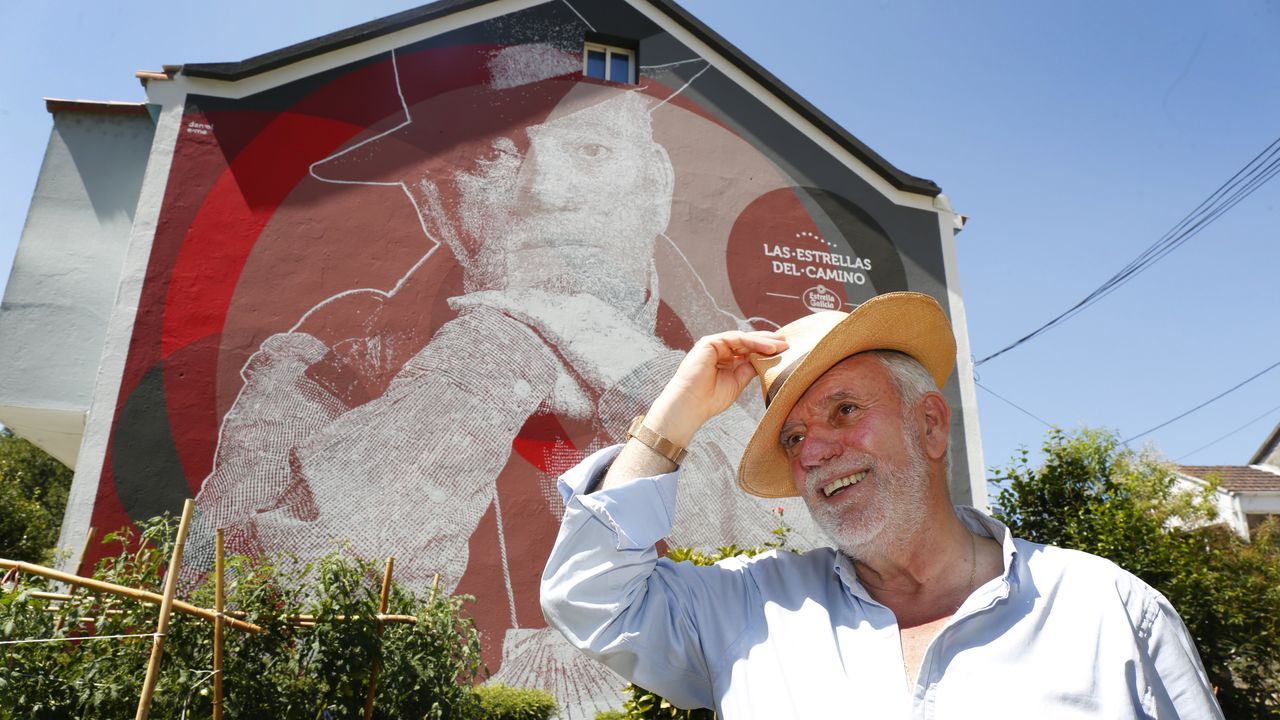The other ‘Caminos’ from Pontevedra to Santiago – interview with Tino Lores
Various itineraries in the province of Pontevedra invite pilgrims to head to Santiago, beyond the popular Portuguese Camino and the Coastal Route, which attract most travelers journeying to Compostela from southern Galicia. In this province, there is also a route where Santiago and its cathedral are just one stage towards a final destination: the Via Mariana, which begins in northeastern Portugal and leads travelers to Muxía, the great sanctuary of the Virgin near Galicia’s “end of the world.”
Currently, five pilgrimage routes to Compostela hold official recognition, certified by both the Xunta (Regional Government of Galicia) and the Archdiocese. These are the Portuguese Camino, its Coastal variant, the Winter Route, the Sea of Arousa and the River Ulla Routes, and the Via de la Plata. Among these alternatives, the Sea of Arousa Route and the River Ulla stands out for its uniqueness, traversing the Arousan estuary and ascending the Ulla River in a route that recalls the medieval legend. The Winter Route, on the other hand, enters Pontevedra through Rodeiro, crosses Lalín and Silleda, and exits at Vedra, already in the province of A Coruña, passing through A Estrada. To these five official itineraries, the Geira of the Roman Route is expected to soon be added, as explained by Tino Lores, president of the Friends of the “Portuguese Camino Association” and a native of Pontevedra.
In addition to the official itineraries, there is a modern adaptation that has been gaining popularity in O Salnés: the Spiritual Variant. This route starts in Pontevedra, crosses the peninsula with reference to Armenteira, and ends in the Arousa region, where it connects to the traditional Portuguese Camino.
Although the Spiritual Variant is traveled by many pilgrims, who also take the opportunity to visit Combarro without the usual traffic and parking issues in summer, there is another lesser-known route in O Salnés, promoted by the Mancomunidade. This is the Padre Sarmiento Route, which follows the footsteps of this 18th-century religious figure along the entire coast, with Sanxenxo, Portonovo, and the O Grove peninsula standing out for their natural beauty.
Among the unofficial routes, but with passionate advocates, is the Ignacio Taverneiro Camino. This route enters Pontevedra through Salvaterra do Miño, crossing Ponteareas and rural and mountainous municipalities such as Ponte Caldelas and Cerdedo-Cotobade, until it connects to the Jacobean route in Deza-Tabeirós. This route is named after a pilgrim, Ignacio Taverneiro, who died in 1784 and was described in his parish death certificate as a resident of Ponte Caldelas returning from his pilgrimage to the Galician capital.
August is traditionally the peak period for tourism in the province, and consequently for pilgrims on the Jacobean routes, especially the official ones. Tino Lores, a deep connoisseur of all these itineraries, shared some important advice for pilgrims.
– What advice would you give for walking the Camino in the best way?
– First of all, I would advise avoiding doing it in August because the albergues are full, and without prior reservations, there may be no available beds. If possible, I would avoid July and August, but I understand that some people cannot do it in other months, so there are some tips to follow.
– What are these tips?
– For example, avoid large groups of more than 30 people, as it will be difficult to find accommodation. I also recommend trying to book accommodation in advance, if possible.
– What equipment should a pilgrim carry to complete their route smoothly?
– The minimum. A backpack weighing more than ten kilos is already too heavy. You should only bring a t-shirt, spare shoes, and socks in case of need. A sleeping bag is essential because public albergues don’t provide bedding. I miss having campsites along the Camino because, in municipalities like Pontevedra, for example, there’s no place to pitch a tent, and that’s a problem since many young people would like to camp.
– What would you recommend to prevent foot injuries?
– Good footwear. Shoes and socks are fundamental. It’s also important to avoid walking during the hottest hours of the day and on roads, as the heat from the asphalt damages your feet. Carrying some adhesive bandages for injuries is a good idea. However, on the Portuguese Camino, we have the advantage of having health centers every 20 kilometers.
– Open or closed shoes?
– It depends on the person. I recommend closed shoes, such as sports trainers, which are very comfortable, or the classic camino boots.
– What are the best hours to walk in August?
– I recommend starting early, around six in the morning, and going at your own pace. The Camino should be done with the least physical strain possible.
Source: La Voz de Galicia
